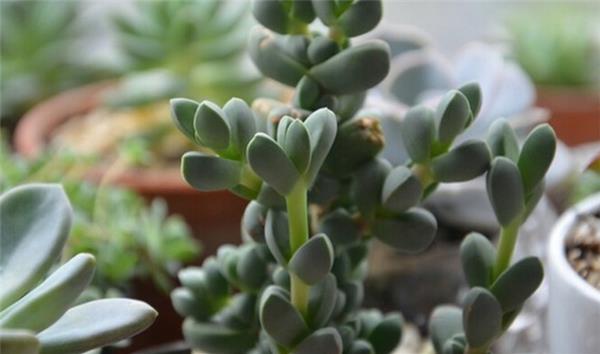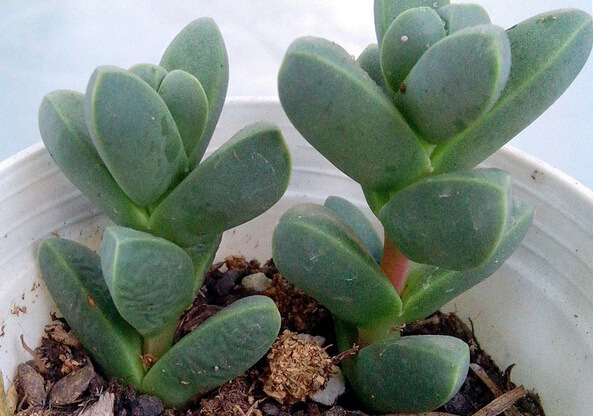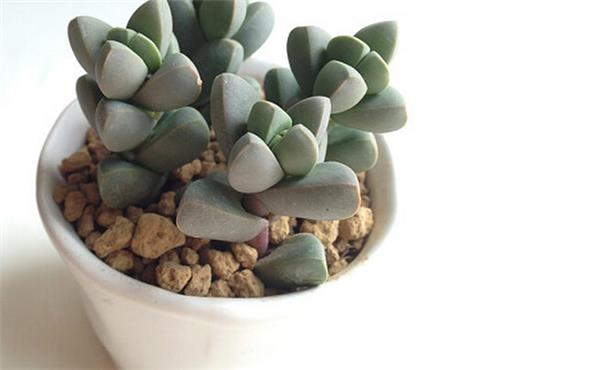Describe in detail the breeding methods and common problems of Begonia angustifolia
Antler Begonia is a small dwarf plant, not tall, and many varieties are very pocket-sized. The leaf is fleshy and has an angled shape. It usually blossoms in autumn and winter, unlike most plants. More suitable for potted plants, also known as smoked chrysanthemum. There are two kinds of long leaves and short leaves that are common in the market. Many offices like to raise antlers and begonia, so how to raise them well?

Staghorn begonia likes warm and semi-dry environment. Because the growth was originally in South Africa, so it is not cold-resistant, generally below 15 degrees Celsius will not grow, like light, and the soil requirements are not high.
Planting skills and points for attention
1. If the antler crabapple is potted, it requires that the soil of the pot needs drainage and ventilation. No water. The soil should not be sour, but neutral. Soil humus can not be too much, ordinary soil is fine. The size of the basin depends on the length of its root.
2. Malus angustifolia doesn't like to be wet or dry. It is generally recommended that the soil should not be watered. To maintain a certain degree of humidity in summer, you can pour more water on the leaves.
3. Plate illumination is generally recommended for its growth conditions. In summer, because the temperature is too high, staghorn begonia is recommended to be cultured in a shady place to keep the soil dry. Spring and autumn is exuberant, so you can get proper light.
4. During the growing period, it is generally recommended to apply fertilizer in spring and autumn. The fertilizer is thin. Fertilize for half a month or once a month.
5. The growth temperature of staghorn begonia is recommended to be about 20 degrees Celsius. If it is lower than 15 degrees Celsius, it will not grow, but less than 5 degrees Celsius, then it will stop growing and even appear wrinkles. Try to keep it in a cool and ventilated place in summer.

Antler crabapple is a very lovely succulent plant, at the same time, antler crabapple is also a kind of ornamental flowering plant, after winter, staghorn crabapple will bloom bright flowers, appear particularly delicate and lovely. In the process of raising antlers and begonia, many people will have the situation of wrinkling and overgrowth of antlers, so what about the wrinkles and overgrowth of antlers?
What if the staghorn crabapple is wrinkled?
Staghorn crabapple is a kind of succulent plant that likes water, and its wrinkling is probably the cause of water shortage. When it is found that the antler crabapple is wrinkled, it is necessary to water the antler crabapple in time, and water it thoroughly, and then put it in a well-ventilated place. See that the potted soil of Malus angustifolia needs to be watered when it is dry, and try to avoid watering the plant.

What about the apprentice of Begonia angustifolia
The antler crabapple grows, which is generally caused by the lack of light, too dark light, too much watering and so on. The antler crabapple grows, and there is no way to change it back, but you can wait until the growth period of the antler crabapple, spring and autumn, cut off the top of the antler crabapple, dry the wound and breed it. Pay attention to the breeding in the future, in spring, autumn and winter, to give staghorn begonia sufficient light, if the light conditions are limited, watering can be properly controlled.

In summer, the antler crabapple will enter a semi-dormant period, to control watering, the appropriate time for watering is in the evening. When it comes to the growing period of the staghorn begonia, the wrinkling condition of the staghorn begonia has not been improved, so it is necessary to consider whether there is a problem with the root of the staghorn begonia, which can be dug out of the soil for inspection.
- Prev

Analysis of the function of one-leaf orchid and how to raise healthy one-leaf orchid
Analysis of the function of one-leaf orchid and how to raise healthy one-leaf orchid
- Next

A large collection of information on culture and breeding methods of Fusang
A large collection of information on culture and breeding methods of Fusang
Related
- Wuhan Hospital Iron Tree Blooming Result Was Instantly Frightened by the Gardener Master
- Which variety of camellia is the most fragrant and best? Which one do you like best?
- What is the small blue coat, the breeding methods and matters needing attention of the succulent plant
- Dormancy time and maintenance management of succulent plants during dormancy
- Minas succulent how to raise, Minas succulent plant pictures
- What are the varieties of winter succulent plants
- How to raise succulent plants in twelve rolls? let's take a look at some experience of breeding twelve rolls.
- Attention should be paid to water control for succulent plants during dormant period (winter and summer)
- Watering experience of twelve rolls of succulent plants
- Techniques for fertilizing succulent plants. An article will let you know how to fertilize succulent plants.

